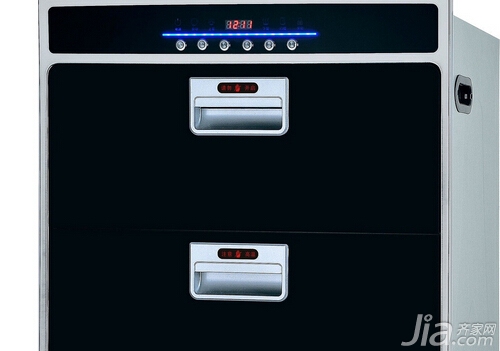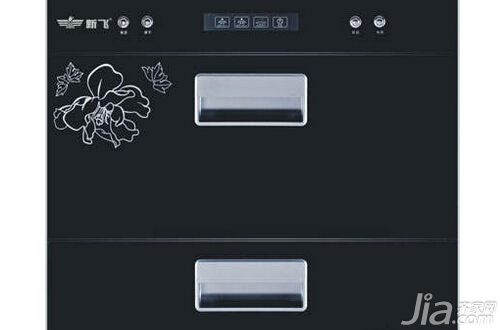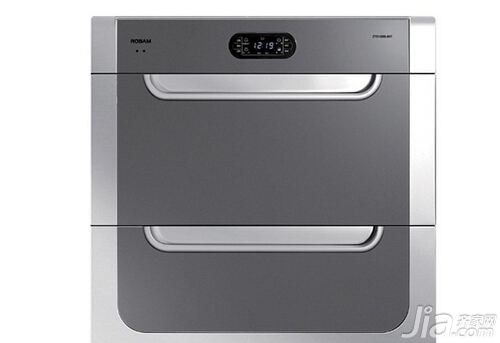Is the ultraviolet disinfection cabinet good? Many people have purchased a disinfection cabinet for their homes. After learning about how it works, they often ask: is an ultraviolet disinfection cabinet effective and reliable? What’s the actual disinfection effect?
To better understand ultraviolet disinfection cabinets, it's helpful to first look at the general working principles of regular disinfection cabinets. In most cases, there are two main methods of sterilization: high-temperature disinfection and ultraviolet (UV) disinfection. Each has its own advantages and limitations, depending on the use case and user preferences.

1. How does an ultraviolet disinfection cabinet work?
The sterilization mechanism of an ultraviolet disinfection cabinet involves exposing bacteria, viruses, and other microorganisms to ultraviolet light. This exposure damages their DNA structure, either killing them or preventing them from reproducing. UV light with a wavelength of 253.7nm is particularly effective because it is most strongly absorbed by DNA. The effectiveness of UV disinfection depends on both the intensity of the light and the total exposure time. Typically, the kill rate can reach up to 99% or higher under optimal conditions.
However, the relationship between irradiation dose and bacterial kill rate is not linear. Even small doses can eliminate some bacteria, while larger bacterial populations may still survive even after high-dose exposure. Therefore, proper usage and placement of items inside the cabinet are essential for maximum effectiveness.

Pros and cons of UV disinfection cabinets
One major limitation of UV disinfection is that ultraviolet rays travel in straight lines and have limited penetration power. This means only the surfaces directly exposed to UV light will be effectively disinfected. If items are placed too close together or in hard-to-reach areas, some bacteria may remain untouched. As a result, national standards require that UV disinfection should not be used as the sole method for cleaning tableware.
Additionally, UV radiation is harmful to human eyes and skin, so safety measures must be in place. Most cabinets are designed with sealed compartments to prevent leakage. Glass materials typically block over 99% of UV light, making them safe for normal use. However, if you notice any UV light escaping from the cabinet, it should be stopped immediately and inspected for repairs.

2. How do high-temperature disinfection cabinets work?
High-temperature disinfection uses heat to destroy microorganisms. It typically involves heating the cabinet to around 100°C for at least 15 minutes. This process denatures proteins in bacteria and viruses, ultimately killing them. Most high-temperature cabinets use far-infrared heating technology, which efficiently transfers heat to the contents inside.
Classification of high-temperature disinfection cabinets
These cabinets are generally divided into one-star and two-star models based on their sterilization effectiveness. One-star models operate at temperatures above 100°C and can kill common bacteria like E. coli and Staphylococcus aureus with a 99.9% kill rate. However, they are not effective against viruses such as hepatitis B. Two-star models, on the other hand, reach temperatures above 120°C, allowing them to kill more resistant viruses, including hepatitis B and poliovirus, also with a 99.9% kill rate.
Disadvantages of high-temperature disinfection
Despite their effectiveness, high-temperature disinfection cabinets have some drawbacks. They consume more energy, and temperature distribution can be uneven, potentially damaging sensitive items. Prolonged exposure to high heat may also cause deformation of the cabinet’s interior components, seals, and handles, creating potential safety risks.
Summary
After understanding the working principles of both ultraviolet and high-temperature disinfection cabinets, it’s clear that each has its own strengths and weaknesses. While UV cabinets are efficient and energy-saving, they may not cover all areas properly. High-temperature models are more thorough but come with higher energy costs and potential damage risks. Choosing the right type depends on your specific needs and usage habits.
What, the decoration still uses his own money? ! The Qi family is decorated in installments, with an ultra-low annual interest rate of 3.55% and a maximum loan of 1 million. Apply now to enjoy the discount
If you are interested in brand cooperation, content collaboration, or advertising on this website, please send an email to:
Disinfection cabinet kitchen appliance glass
Shape and Size: Dish garden pots are typically shallow and wide, resembling a shallow dish or bowl. They can come in various sizes, ranging from small tabletop versions to larger containers suitable for floor displays. The shallow depth allows for the planting of multiple types of plants in a compact space.
Material: Dish garden pots can be made from a variety of materials, including ceramic, terracotta, plastic, metal, or even concrete. Ceramic dish garden pots are popular for their durability and aesthetic appeal, as they come in a wide range of colors, textures, and finishes.
Design and Style: Dish garden pots come in a variety of designs and styles to suit different preferences and interior decor themes. Some pots have a simple, minimalist design, while others may feature intricate patterns, decorative motifs, or textured finishes. The design of the pot can enhance the overall aesthetic of the dish garden.
Planting Area: The planting area of a dish Garden Pot is typically wide and flat, providing ample space for arranging various plants. The wide surface area allows for creativity in plant selection and arrangement, including combining different textures, colors, and heights to create visually appealing displays.
Drainage: Proper drainage is essential for the health of plants in a dish garden. Many dish garden pots come with drainage holes at the bottom to allow excess water to escape. Some pots may also include a removable tray or saucer to catch water runoff and protect surfaces.
Versatility: Dish garden pots offer versatility in plant selection, allowing for the creation of various themes or styles, such as succulent gardens, herb gardens, or tropical plant arrangements. They can be used indoors as decorative accents on tabletops, shelves, or windowsills, or outdoors on patios, balconies, or garden beds.
Maintenance: Dish garden pots require regular maintenance to keep the plants healthy and thriving. This includes watering as needed, pruning or trimming plants to maintain their shape and size, and occasional fertilizing to provide nutrients. The shallow depth of the pot may require more frequent watering, depending on the plants' needs and environmental conditions.
Creativity: Creating a dish garden is a creative and rewarding activity that allows for personal expression and experimentation with different plant combinations and arrangements. Gardeners can customize their dish gardens to reflect their individual tastes, preferences, and gardening skills.
Overall, dish garden pots offer a versatile and stylish way to create miniature gardens indoors or outdoors. With the right combination of plants, design elements, and care, dish gardens can become beautiful focal points in any space, bringing a touch of nature and greenery to the environment.
Dish Garden Pot,Dish garden, Dish planter ,House Plant Pots
Yixing Bocai Pottery Co.,Ltd , https://www.bocaipottery.com